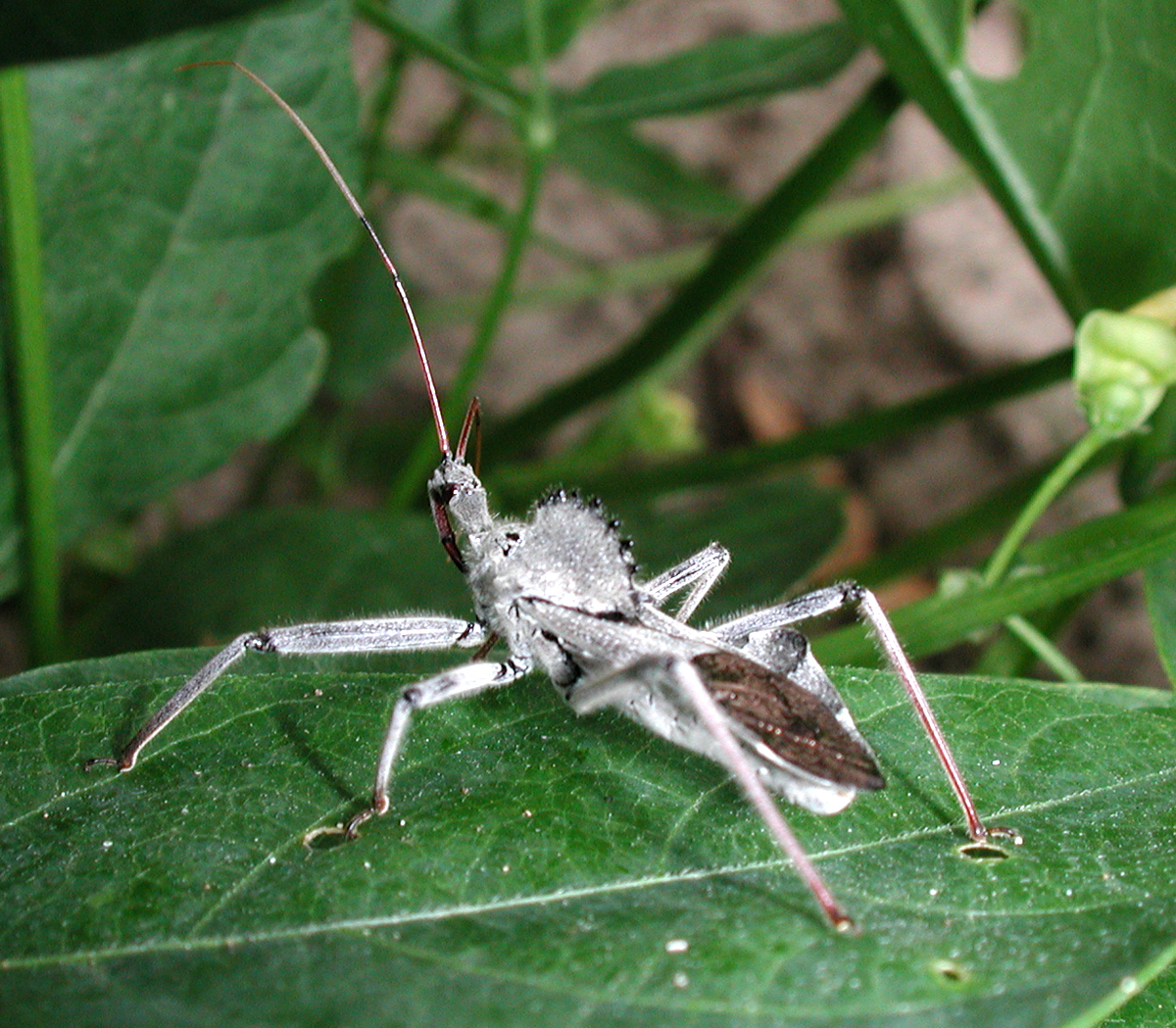- Wheel bug
Taxobox | name = Wheel bug

image_width = 240px
regnum =Animalia
phylum =Arthropoda
classis =Insecta
ordo =Hemiptera
familia =Reduviidae
genus = "Arilus"
species = "A. cristatus"
binomial = "Arilus cristatus"
binomial_authority = (Linnaeus , 1763)The Wheel bug ("Arilus cristatus"), in the family
Reduviidae , is one of the largest terrestrialtrue bugs inNorth America , being up to 1 1/2 inches, or 38 mm, in length; it is the only member of its genus. A characteristic structure is the wheel-shaped pronotal armour. They are predators upon soft-bodied insects such ascaterpillar s,japanese beetle s, etc., which they pierce with their beak and inject salivary fluids that dissolve soft tissue. Because most of their prey are pests, wheel bugs are considered beneficial insects, although they can inflict a painful bite if handled carelessly.Wheel bugs are common in eastern
North America , although many people have never seen them. They arecamouflage d and very shy, hiding whenever possible. They have membranous wings and fly with a clattery flight which can easily be mistaken for the flight of a largegrasshopper . The adult is gray to brownish gray in color and black shortly after molting, but the nymphs (which do not yet have the wheel-shaped structure) have bright red or orange abdomens.Characteristics
The wheel bug has characteristic dorsal armor, shaped like a wheel, or maybe a cog. It was compared by the
Hilton Pond Center to arobot , due to this structure but also due to its front legs, which extend in jerky motions. This insect is considered one of the largest true bugs in existence. It moves slowly, and also flies slowly. In flight, it produces a buzzing sound. It has one of the most developed mouth parts among true bugs. Its beak arises from the anterior end of its long, tubular head and unfolds forward. The bug plunges its beak into its victim, holding them with its front legs. It then injects enzymes into the victim, paralyzing them and dissolving their insides, and proceeds to drain all of the victim's bodily fluids. The bite of a wheel bug is painful and may take months to heal (sometimes leaving a small scar), so caution is advised when handling them.The wheel bug is also noted to be very vicious in the wild, and cannibalistic behaviors between them have been noted; for example, nymphs preying on nymphs and the female feeding on the male after mating is concluded.
It possesses two scent sacs (red-orange in colour) that it everts from its anus, especially when disturbed. The scent produced by it isn't as powerful as the one produced by its fellow the
Stink Bug but is still strong enough to be sensed by human noses.Reproduction
The reproductive cycle of the wheel bug initiates in autumn. When a pair of wheel bugs encounter each other and mate, the female will lay 40-200 small, brown, cylindrical eggs on a tree twig, and eventually die. The eggs will hatch in the next spring into eighth-inch long red
nymphs , which will undergo 5 molts and metamorphose until they reach the adult stage the following summer.Gallery
References
* [http://www.hiltonpond.org/ThisWeek030901.html Hilton Pond Center] Article on the Hilton Pond Center relating Wheel Bugs
* [http://creatures.ifas.ufl.edu/trees/wheel_bug.htm wheel bug] on theUF / IFAS Featured Creatures Web site
Wikimedia Foundation. 2010.
